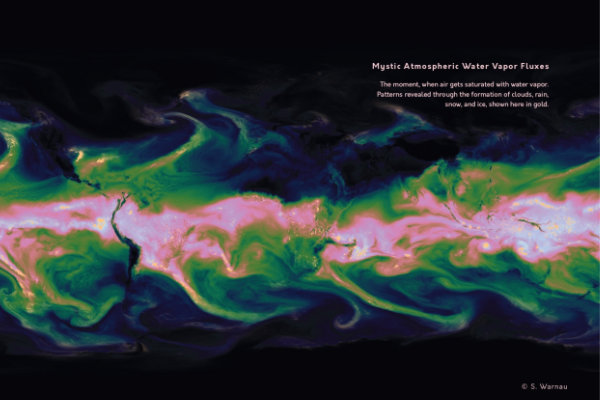Seminar wednesday 4 september 2025
 Extreme precipitation depiction in kilometer-scale Earth system models
Extreme precipitation depiction in kilometer-scale Earth system models
Wednesday 4 september 2025
Jonathan Wille, postdoc at ETH Zurich
Abstract
As the climate continues to warm, hydrometeorological extremes are extracting a greater toll from society both economically and socially. Whether it is increasing flash floods in the Alpes, longer droughts in the Mediterranean region, humid heat extremes in the Persian Gulf, or surface melt events over the Antarctic Ice Sheet, increasing water vapor content in the atmosphere is creating more extremes in the global water cycle. Current CMIP-style global climate models broadly project an increasing frequency and intensity of heavy precipitation and drought. However, the relatively coarse resolution, lack of ocean-atmosphere coupling, and parameterization of convection means they do not capture the spatial heterogeneity and mesoscale processes of complex coasts and topography relevant for simulating extreme events which often introduces model biases.
I will present results from my work in the H2020 Next Generation Earth Modelling Systems (nextGEMS) project which aimed to address these issues with the development of kilometer-scale, convection-permitting, fully-coupled, Earth-system models. This includes an examination of the nextGEMS models’ performance at depicting precipitation extremes in the Mediterranean region of Europe and then expanding the analysis globally to look at future dry spell trends. Afterwards, I will present future research plans of utilizing high-resolution models to examine the behavior of extreme weather in Antarctica and the risk this potentially poses to future ice sheet stability.
- extrait:
- lien_externe:
- kc_data:
- a:8:{i:0;s:0:"";s:4:"mode";s:0:"";s:3:"css";s:0:"";s:9:"max_width";s:0:"";s:7:"classes";s:0:"";s:9:"thumbnail";s:0:"";s:9:"collapsed";s:0:"";s:9:"optimized";s:0:"";}
- kc_raw_content:
 Extreme precipitation depiction in kilometer-scale Earth system models
Extreme precipitation depiction in kilometer-scale Earth system modelsWednesday 4 september 2025
Jonathan Wille, postdoc at ETH Zurich
Abstract
As the climate continues to warm, hydrometeorological extremes are extracting a greater toll from society both economically and socially. Whether it is increasing flash floods in the Alpes, longer droughts in the Mediterranean region, humid heat extremes in the Persian Gulf, or surface melt events over the Antarctic Ice Sheet, increasing water vapor content in the atmosphere is creating more extremes in the global water cycle. Current CMIP-style global climate models broadly project an increasing frequency and intensity of heavy precipitation and drought. However, the relatively coarse resolution, lack of ocean-atmosphere coupling, and parameterization of convection means they do not capture the spatial heterogeneity and mesoscale processes of complex coasts and topography relevant for simulating extreme events which often introduces model biases.
I will present results from my work in the H2020 Next Generation Earth Modelling Systems (nextGEMS) project which aimed to address these issues with the development of kilometer-scale, convection-permitting, fully-coupled, Earth-system models. This includes an examination of the nextGEMS models’ performance at depicting precipitation extremes in the Mediterranean region of Europe and then expanding the analysis globally to look at future dry spell trends. Afterwards, I will present future research plans of utilizing high-resolution models to examine the behavior of extreme weather in Antarctica and the risk this potentially poses to future ice sheet stability.
- titre:
- intervenant:
- date:
